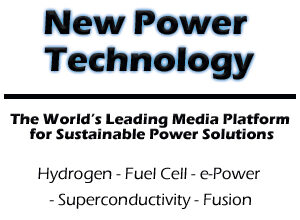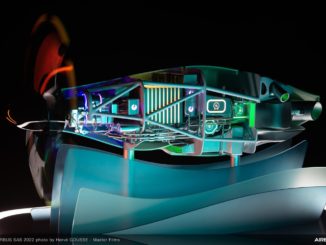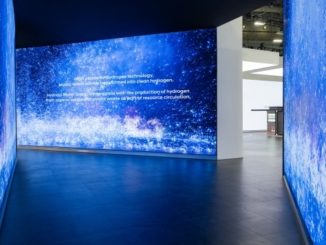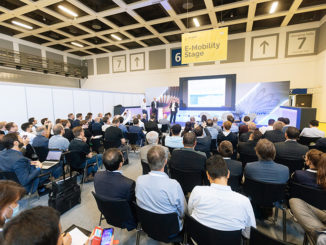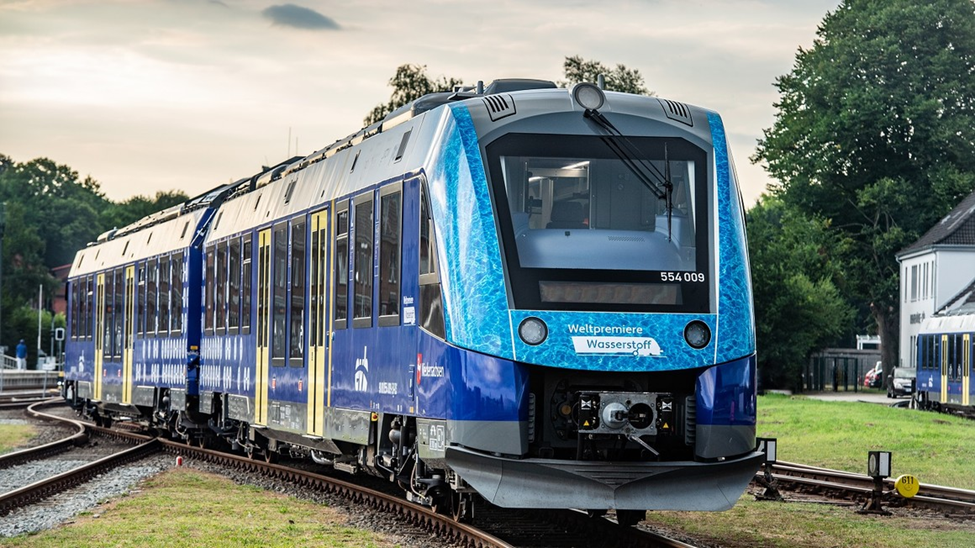
Only days before the beginning of September, a rite of passage occurred on the rail tracks of Lower Saxony, Germany when the Coradia iLint reached a historical milestone as it began use on the world premiere 100% hydrogen train route in passenger operation. The fuel-cell powered regional train emits only only steam and condensed water while operating with a low level of noise. Engineered and built by Alstom, it highlights a remarkable series of steps that the company has made recently in hydrogen and fuel cell development for e-mobility — much of the activity derived from its acquisition of fuel cell manufacturer Helion Hydrogen Power in 2021.
Other recent moves by Alstom include:
- A new development center in Montreal, aiming to change the situation of rail networks in the U.S. and Canada which are only 1% electrified, far behind the progress in other parts of the world.
- Agreement with a hydrogen infrastructure operator in Poland to supply fuel-cell powered trains for the Polish rail network.
- Plans with ENGIE to convert mainline freight networks in Europe to hydrogen fuel cell electrification, replacing diesel locomotives.
- Forging partnerships with numerous other players to build out its hydrogen & fuel cell ecosystem.
For the Coradia iLint, there are now 14 rail vehicles with fuel cell propulsion belonging to Landesnahverkehrsgesellschaft Niedersachsen (LNVG). LNVG had already started looking for alternatives to diesel trains in 2012 and thus provided momentum for the development of the trains in Germany. Other project partners for this world debut are the Elbe-Weser railways and transport company (evb) and the gas and engineering company Linde.
On their route, the 14 hydrogen-powered Alstom regional trains will be operated by evb on behalf of LNVG, gradually replacing 15 diesel trains. They will be fuelled daily and around the clock at the Linde hydrogen filling station. Thanks to a range of 1,000 kilometres, the Alstom multiple units of the Coradia iLint model, which are emission-free in operation, can run all day long on just one tank of hydrogen on the evb network. In September 2018, there had been a successful trial run of almost two years with two pre-series trains.

“Emission free mobility is one of the most important goals for ensuring a sustainable future and Alstom has a clear ambition to become the world leader in alternative propulsion systems for rail. The world’s first hydrogen train, the Coradia iLint, demonstrates our clear commitment to green mobility combined with state-of-the-art technology. We are very proud to bring this technology into series operation as part of a world premiere, together with our great partners,” says Henri Poupart-Lafarge, CEO and chairman of the board of Alstom.
Despite numerous electrification projects in several countries, a significant part of Europe’s rail network will remain non-electrified in the long term. In many countries, the number of diesel trains in circulation is still high, with more than 4,000 cars in Germany, for instance.
Alstom currently has four contracts for hydrogen fuel cell powered regional trains. Two are in Germany, the first for 14 Coradia iLint trains in the region of Lower Saxony, and the second for 27 Coradia iLint trains in the Frankfurt metropolitan area. The third contract comes from Italy where Alstom is building 6 Coradia Stream hydrogen trains in the region of Lombardy – with the option for 8 more, while the fourth is in France for 12 Coradia Polyvalent hydrogen trains shared across four different French regions. So far, the Coradia iLint has been successfully tested in several other countries including Austria, the Netherlands, Poland and Sweden.
The Coradia iLint is the world’s first passenger train to run on a hydrogen fuel cell that generates electrical energy for propulsion. On evb’s network, the train travels at speeds of 80 to 120, with a maximum speed of 140 kilometres per hour. It was designed by Alstom teams in Salzgitter, Germany, at its center of excellence for regional trains, and in Tarbes, France, its center of excellence for traction systems.
A hydrogen fueling facility in Bremervoerde operated by Linde contains 64 500-bar high-pressure storage tanks with a total capacity of 1,800 kilograms, six hydrogen compressors and two fuel pumps. Future plans call for lydrogen production on site by means of electrolysis and regeneratively generated electricity.
Innovation center in Canada
In Canada in July, Alstom established an innovation center for green rail mobility at its Americas headquarters in St-Bruno-de-Montarville, Quebec. This was a key commitment made by the group at the time of the acquisition of Bombardier Transportation, completed in January 2021. The center’s main mission will be to develop the future platforms for green hybrid, battery or hydrogen propulsion technologies specifically tailored to the North American rail freight and passenger market. It will be led by Eric Rondeau, who recently worked as senior strategic advisor to Investissement Québec International and the Quebec Ministry of Economy and Innovation to develop and deploy the Quebec battery industry.
“Unlike Europe or Asia, the rail network in Canada and the US is barely 1% electrified,” notes Rondeau. “It is used by 27,000 diesel locomotives every day, which is a significant proportion of the carbon footprint of our companies. Efforts to make this mode of transport greener must be stepped up, in particular by providing public decision-makers and our customers with proven electric propulsion technologies. It will be this innovation centre’s role to develop these new innovative platforms or to adapt them to meet the challenges of the region.”
Fuel-cell powered trains for Polish railway
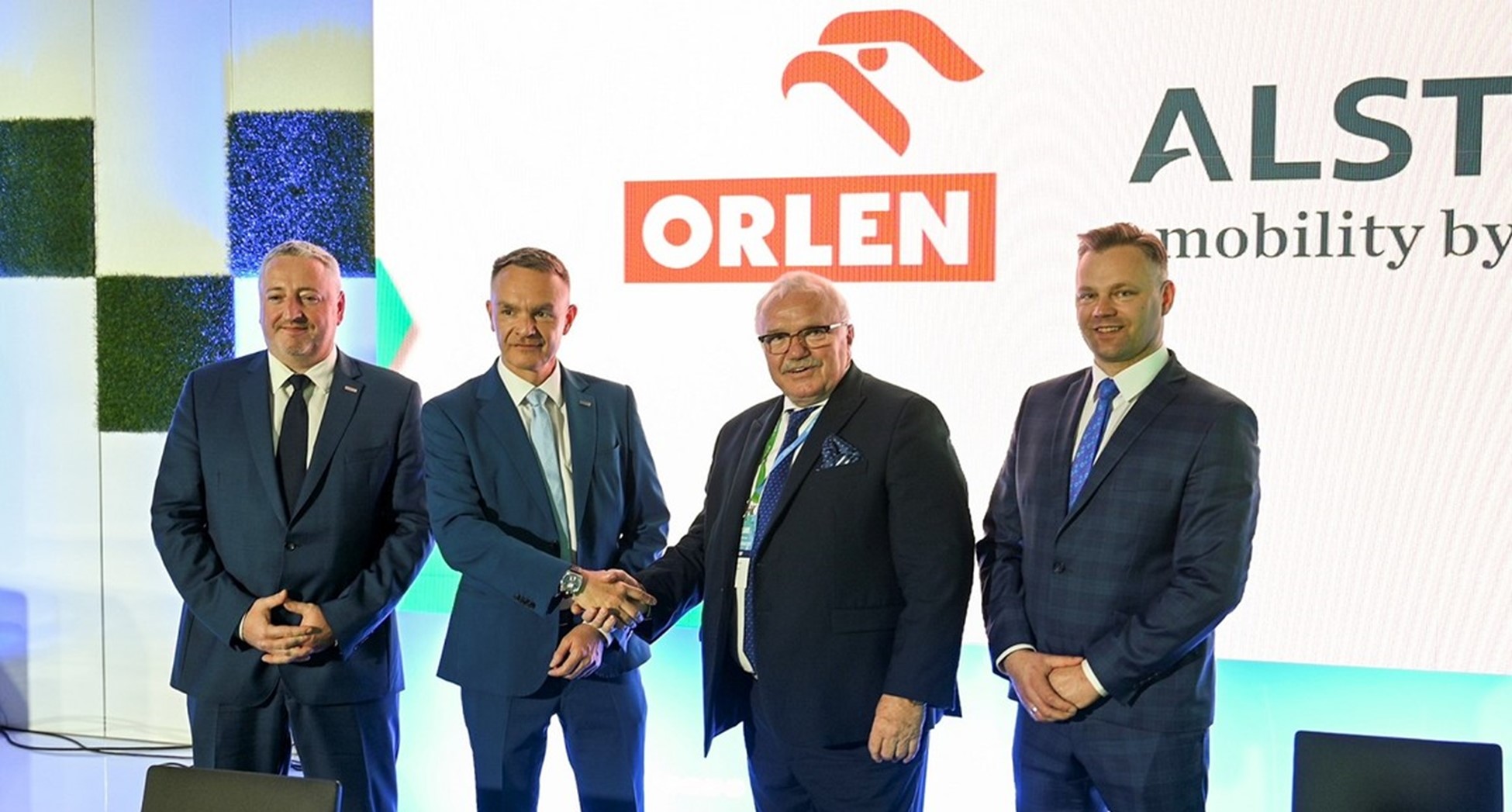
In Poland, Alstom laid plans in May with PKN Orlen to supply trains powered by fuel cells. PKN will provide the refueling infrastructure and the first hydrogen vehicles are likely to roll out on regional lines within two years. Under the agreement, Alstom will cooperate with PKN in participating in proceedings organized by public rail transport operators. Alstom will be responsible for the supply of the zero-emission trains while, in turn, PKN will be responsible for the distribution, storage and supply of hydrogen fuel. PKN is also the leader of the Mazovian Hydrogen Valley, which cooperates with 36 entities in the field of production, storage and use of zero- and low-emission hydrogen in transport, power generation, municipal economy and agriculture.
Deal with ENGIE for mainline rail freight in Europe
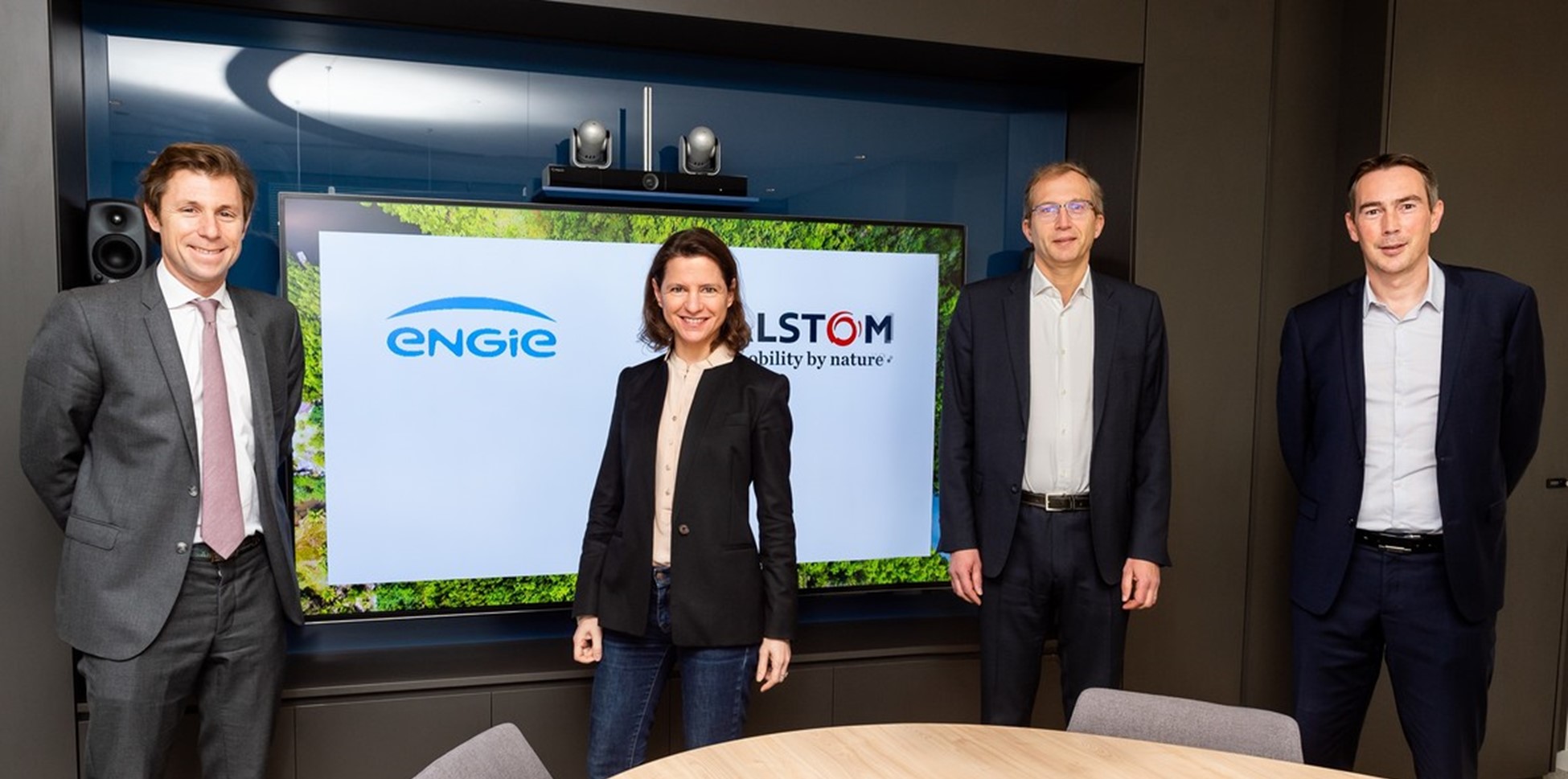
Only a month earlier, Alstom and ENGIE signed a partnership to supply a fuel cell system with renewable hydrogen for use in European rail freight, seeking to replace diesel-powered locomotives with hydrogen versions. Under the agreement, Alstom will design a hydrogen solution based on a high-power fuel cell system that can power electric locomotives on non-electrified sections. ENGIE will supply the hydrogen via the deployment of an innovative supply chain.
“Our ambition is to accelerate the adoption of hydrogen power in the rail industry by developing innovative solutions that help green heavy-duty mobility operations like rail freight,” said Raphael Bernardelli, vice president of corporate strategy for Alstom. “In order to help drive the evolution of the hydrogen rail sector we need to gather stakeholders, and this is exactly why we have decided to partner with ENGIE.” Already a partner with Alstom in the Coradia project, ENGIE has set a goal to develop 4 GW of renewable hydrogen production capacity by 2030, supported by 700 km of dedicated hydrogen network, 1 TWh of storage capacity and the operation of more than 100 refueling stations.
Building the ecosystem via multiple partnerships
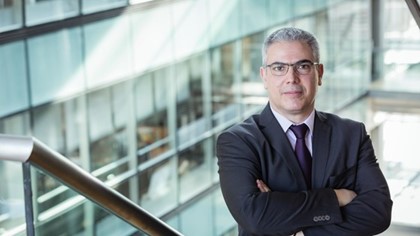
An overview of the cascade of partnerships was given recently by Braham Soua, VP Regional Rolling Stock Platform for Alstom. “Alstom is a pioneer in hydrogen powered trains. We are building the foundation for the future industry. There are a few key goals we need to work on: making hydrogen more competitive and robust, and finding a way to offer complete systems to our clients. To better deliver on those objectives, among many other actions, we have signed strategic long-term partnerships with a variety of companies.”
“Alstom’s core competency in terms of hydrogen lies in rolling stock design and production. But many customers come asking for complete hydrogen fuel systems. What’s the solution? Cooperating with partners who are able to deliver quality work on the rest of the scope.”
Thus, Alstom has signed a memorandum of understanding (MOU) with Liebherr, a supplier of turbochargers to fuel system integrators, for a fuel cells compressor. This agreement is aimed to improve performance of fuel cells by increasing their power density and reducing their cost for the rail sector. Another MOU with Hynamics is set to reduce the time needed to refuel hydrogen passenger trains. Additionally, there is an MOU with Plastic Omnium for the development of hydrogen tanks on board. Alstom and Hynamics teams are already carrying out joint modelling and simulation work. A test bench, including a hydrogen production station, a compressor and storage racks, is under development to evaluate the behaviour of the refuellng operation under optimal observation conditions.
“On top of everything else,” adds Soua, “we’re also doing knowledge exchange. For scientific expertise on hydrogen, Alstom is collaborating with the French Atomic Energy and Alternative Energies Office. We’re also involved in return on experience with Safran, an aircraft and aerospace corporation which is experienced in studying all aspects of using H2 fuel.” For more info, see www.alstom.com.

